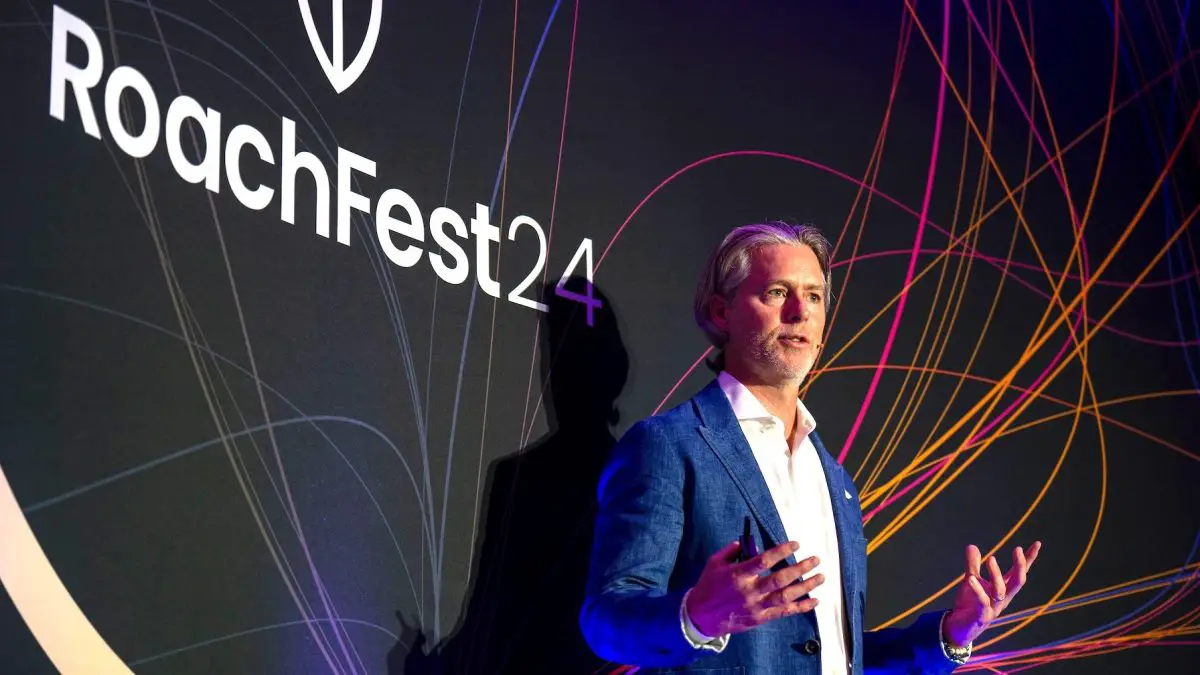Cockroach Labs, the business and core developer behind the eponymous distributed SQL database known as CockroachDB, is changing its licensing once again — five years after it moved on from an open source model.
The company revealed today that its consolidating its self-hosted product under a single enterprise license, a move designed to encourage larger businesses to step up and pay for the features they really need. All customers with more than $10 million in annual revenue will now have to pay, a fee that is based on the number of CPUs or CPU cores within the server system where the database is deployed — essentially, the bigger the database deployment, the bigger the cost.
At the same time, startups below this revenue threshold will be able to use the exact same enterprise version at no cost, in the hope that they may reach a size that will eventually require them to pay for these premium features.
Cockroach Labs co-founder and CEO Spencer Kimball says the threshold will be self-attesting, meaning nobody will be asked to prove revenues.
“It’s just an honor system — most businesses that ought to be paying us aren’t going to lie about something like that,” Kimball said in an interview with TechCrunch. “We’ve provided a very good core product that has now crossed a threshold in terms of reliability and capabilities, and in order to build our business we need companies to pay us rather than being free riders. And you can’t blame them — we’re giving these big companies our software for free. But that’s what we’re changing here.”
The announcement comes amid a swathe of licensing changes in the enterprise software space, underscoring the perennial struggle between open source and proprietary. In the past 12 months, HashiCorp switched its “infrastructure as code” software Terraform to a source-available license, while Element transitioned key elements of Matrix, the decentralized communication protocol, to a less-permissive open source license — similar to Grafana before it. App performance management platform Sentry, meanwhile, created an entirely new license called the Functional Source License (FSL) designed to “grant freedom without harmful free-riding.”
Cockroach Labs is no stranger to shaking things up around licensing. But by moving all self-host deployments under a single license — ignoring the specific features a developer or company might need — it’s further blurring the many lines that exist across the “software freedoms” spectrum.
“We’re trying to ensure that we’re giving a better product to our smaller customers as an investment, and on the higher end trying to find that right balance where there is a fair exchange of value,” Kimball said.
How Cockroach Labs started
Cockroach Labs is the handiwork of Kimball, Peter Mattis (CTO) and Ben Darnell (chief architect). But before all that, way back in the nineties, Kimball and Mattis created the GNU Image Manipulation Program (GIMP), which is like a pared down, open source version of Photoshop. After a decade-long stint at Google, they founded a photo-sharing app called Viewfinder in 2011, with their former Google colleague Darnell joining them the following year.
Viewfinder shuttered in 2013 after Square acquired the startup’s founding team. The seed of CockroachDB was sown during their time at Square, with the first commit to the open source project made in February, 2014.
Kimball, Mattis, and Darnell left Square to form Cockroach Labs in early 2015, quickly raised a seed round of funding from backers including Google Ventures and Sequoia, and launched the public beta of CockroachDB the following year. In the intervening years, Cockroach Labs has raised north of $600 million at a valuation of $5 billion with CockroachDB gaining traction among developers for its promise as a resilient, scalable database capable of handling all manner of outages, with data distributed and balanced across multiple nodes.
However, as with just about every major business built on an open source foundation, Cockroach Labs transitioned away from an open source Apache 2.0 license in 2019 to protect its own efforts to sell services off the back of CockroachDB.
Why vendors are going ‘source available’
It’s a familiar story: A major cloud provider starts selling its own managed version of an open source project, bypassing the company and core developers who contribute most of the code. Amazon is often at the center of these spats, with notable examples including Elasticsearch’s license switch to prevent AWS from monetizing Elastic’s hard work.
While the hyperscalers are perfectly within their rights to do this under the terms of the open source license, companies such as Elastic and Cockroach Labs have fought this trend by switching to a “source available” license. This offers many of the freedoms of a traditional open source license, but with one key difference: developers aren’t allowed to sell a commercial version of the product “as-a-service,” without paying for a license.
Within this licensing model, Cockroach Labs’ customers have always been able to self-host CockroachDB. This includes a free version aimed at smaller companies, freelance developers, or students, and an enterprise incarnation with sugar on top, including disaster recovery tooling, enhanced security, cluster optimization, and support.
However, Kimball says they identified two issues with this setup: startups wanted some of the enterprise features, but were unable or unwilling to pay for them all; and larger businesses were compromising their own use of CockroachDB just to save money, sticking with the free version even when the enterprise version made the most sense.
“Our ‘core’ [free] offering has become one of our savviest competitors,” Kimball said. “The reason that’s true today, but wasn’t necessarily true two years ago, is that the product quality has gotten to the point where you can go a long time without having any kind of support needs. That’s amazing, and we’re happy to deliver that level of quality to our customers. But on the other hand, particularly when macroeconomic times are tighter, we’ve seen that some companies will forgo the enterprise contract — which comes with a better level of support — because they ask themselves how many times they’ve had a support ticket in the past year.”
The licensing change will start November 18, when Cockroach Labs will launch CockroachDB version 24.3. While the current self-hosted product has a bunch of different licenses attached to it covering different parts of the codebase, the new Enterprise tier will have a single license which the company is calling the CockroachDB Software License (none of these changes impact Cockroach Labs’ existing cloud product).
“By making all of the enterprise features free to these earlier stage companies, we’re investing in them, we’re giving them an enterprise-grade product,” Kimball added. “In return, we hope that this helps them succeed, and they cross that $10 million annual revenue threshold. It’s a quid pro quo that makes a lot of sense.”
The future of open source
As all these various licensing transitions pile up, it may be tempting to believe that open source is dead. But the matter isn’t quite so simple. Open source components permeate most of the software world, including CockroachDB itself, which relies on many third-party libraries, languages, and toolkits. The company also continues to open-source some of its own internal technologies, such as its Pebble key-value store, which it created to replace an open-source alternative developed by Meta called RocksDB.
The same is true across the technological landscape, evidenced by the likes of Spotify which is morphing into a developer tooling company by monetizing its own open source efforts.
So open source is far from dead, but it is on shaky footing — particularly around fully-fledged commercial, vendor-driven projects, judging by the events over the past five years and more.
“I believe that the software component side of open source is going to continue to thrive — it’s super valuable, and I don’t see that going away,” Kimball said. “But with finished products, the reality is that the best way to really monetize them in 2024 is to build a service around it. And once you build a service, almost everything starts to trend towards closed-source. Because if you simply build everything in open source for your service, someone else can come along and just build a service on it too.”










